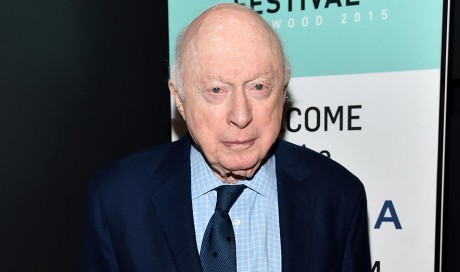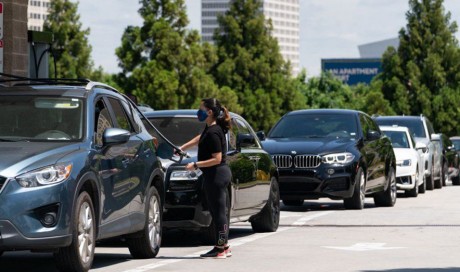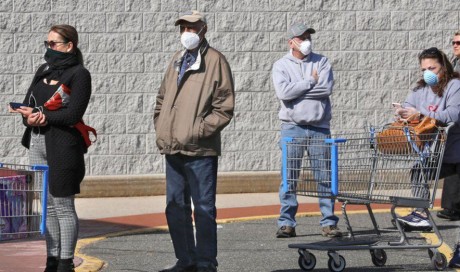Indians who go to the US are one of the best-educated and best-paid groups. Many are in highly specialised jobs — software developers, doctors, engineers, CEOs, and other top-class workers that arrive on H-1B visa.
Other Asians — Filipinos, Chinese, Koreans — are also among the most hardworking of the lot.
But there emerged a dark underside to this: the deadly cocktail of hate crimes and desperate situations that confront those who fall between the cracks of the US immigration system.
How many undocumented Indians are in the US? https://t.co/ote2QwDKfd pic.twitter.com/GXCSVehGRB
— Gulf News (@gulf_news) 9 October 2017
One recent case in Sunayana Dumala, wife of five years of Srinivas Kuchibhotla, an Indian avionics software engineer shot dead in February 2017 in Kansas City by a white man in a suspected hate crime.
Kuchibhotla's colleague, Alok Madasani, survived the attack. Both Kuchibhotla and Madasani were in the US on H-1B visa, which allows US employers to employ foreign workers in specialised occupations.
The shooter, Adam Purinton, now faces hatecrime charges in a US court.
Highly educated
Like Kuchibhotla, who studied in the US university, a great majority of Indian immigrants to America are young and highly educated.
It's no surprise that CEOs or senior executives of name-plate firms like Google, Pepsi, Microsoft, Telsa trace their roots to the Subcontinent.
But there are those like Dumala and the children of H-1B visa holders, who run afoul with the system. Many are students who overstayed their visas, divorcees and spouses of H1B visa holders who died.

How did this happen?
The US job market and immigration system itself need a closer look. For example, dependents of H-1B visa holders are legally brought to the US on another visa, called the H-4.
At the time of her husband's death, Dumala was in the US on H-4 visa, tied to her husband’s H-1B.
Dumala's story has been extensively covered recently by Wired, a highly respected US tech publication, highlighting her battle against deportation from the US.
Her case is rare.
But Dumala is part of a growing group — the dependents of H-1B visa holders — often overlooked in the US immigration debate.
Numbers
So how many Indians are staying illegaly in the US today, facing the risk of deportion?
In 2016, a report by The Atlantic showed that Asians — Indians, Filipinos, Chinese, Koreans — have outpaced Mexicans in terms of growth of undocumented expatriates in the US.
More to it, research done by the Wall Street Journal last year shows that India has become the fastest-growing source of new undocumented immigrants to America (this is does not refer to native Americans, the indigenous peoples of the US or “American Indians”).
2.4 million Indian immigrants
Here's the big picture: there's an estimated 2.4 million immigrants from India residing in the US as of 2015, or 6 per cent of the estimated 43.3 million foreign-born population in America (Mexicans account for the largest), according to Migration Policy Institute, a Washington think tank.
But estimates of undocumented Indians in the US in particular vary greatly. The Hindu reported that at least 300,000 Indians in the US are at risk of deportation.
In September, the Indian Express reported that there are 240,000 Indians living undocumented in the US.
Against this background, hate crimes against other Asian-Americans have risen, according to National Public Radio, a syndicator to a network of 900 public radio stations across the US.
Another perspective
Figures on illegal immigration, at best, are just "preliminary estimates", according to a "fact file" published by Pew Research Center in April 2017.
Pew estimates that overall, there were 11.1 million unauthorised immigrants in the US in 2015, down slightly from 11.3 million in 2009.
The same figures show that while Mexicans made up half of the undocumented immigrants in 2016, the Mexicans' share of the total has been declining.
But Pew gave a different take on the numbers. It cited that only about 25 per cent of the foreign-born population (based on 2014 estimates) in the US are undocumented.

The other components of America's foreign-born population are much larger, vibrant and legal — 19 million had been naturalised citizens, 11.7 million are Green Card holders, 1.7 million are visa holders.
Under the Trump administration's immigration policies, almost all of the undocumented immigrants could be targeted for deportation, including the estimated 790,000 "dreamers" — immigrants who were brought into the US illegally or overstayed their visas as children.
DACA
Under Obama, they were temporarily protected from deportation through the Deferred Action for Childhood Arrivals, or DACA, programme).
The group SAALT (South Asian Americans Leading Together) reported that there are 27,000 Asian Americans already on the DACA list, including 5,500 Indians and Pakistanis.
In addition, there an estimated 17,000 individuals from India and 6,000 from Pakistan eligible for DACA, the report said, quoting SAALT's estimates.
This Op-Ed in @thenation by @SumanSAALT calls for a patriotism of love on the 16-yr anniversary of #September11 https://t.co/JNBD2yor1p
— SAALT (@SAALTweets) 11 September 2017
What's the latest?
On Sunday, October 8, Trump has shown willingness to compromise.
He proposed a deal to US congressional leaders: In exchange for extending protection from deportation to hundreds of thousands of young immigrants under DACA, his hard-line immigration priorities must be enacted.
Trump sends immigration legislation priorities to Congress, including building border wall, speeding up deportations https://t.co/HZtpzNKg3F pic.twitter.com/CoujFqy2Ox
— AFP news agency (@AFP) 9 October 2017
Trump's list of demands also included overhauling the US green-card system, a crackdown on unaccompanied minors entering the country, and building his promised wall along the southern border.

Share This Post















